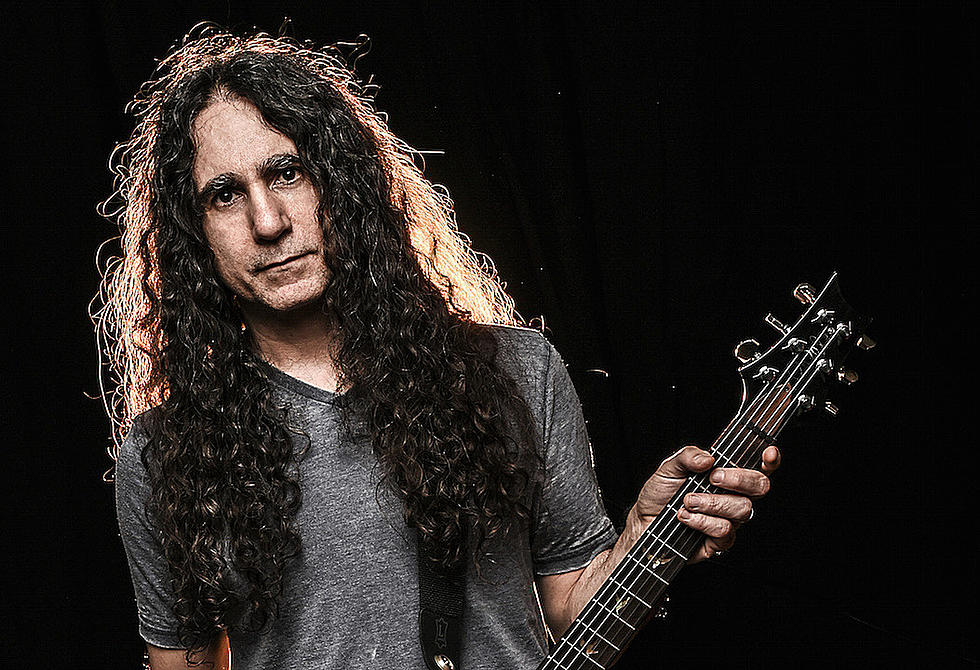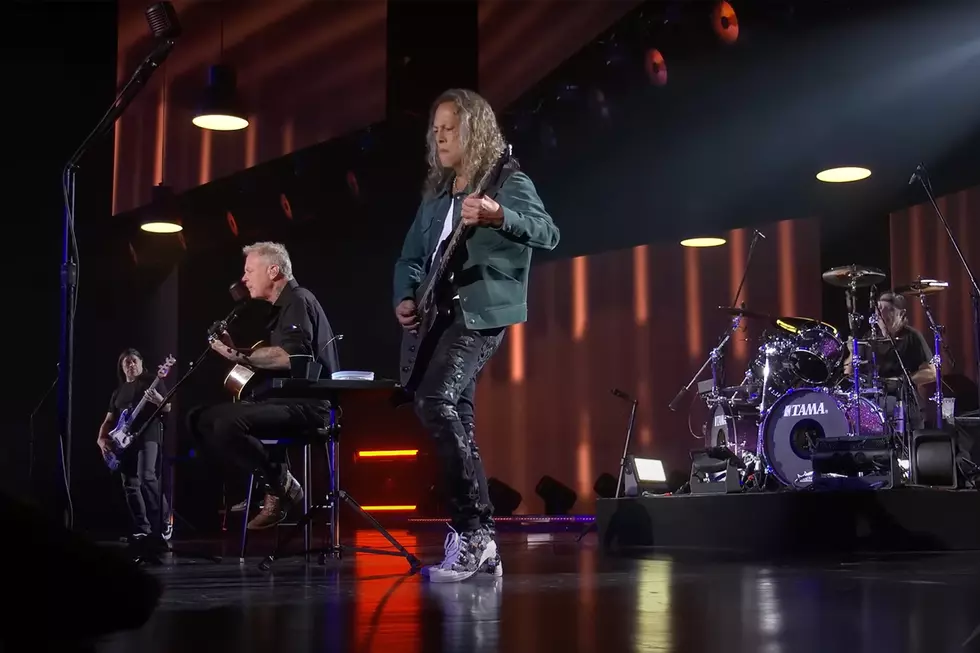
Heavy Metal’s Greatest Guitar Teams
With the exception of Black Sabbath, early heavy metal was built upon a foundation of two-guitar bands. Whether it was the sturdy rhythm/lead axis of Scorpions' Rudolf Schenker and Uli Jon Roth or Judas Priest's legendary K.K. Downing and Glen Tipton team, metal with two guitars is usually twice is good as metal with just one. Black Sabbath being a major exception, of course.
Often credited with inspiring this configuration, Wishbone Ash has to be mentioned. Their use of two guitars playing either harmonic themes or trade-off leads was something not many rock bands were doing at the turn of the 1970s. Andy Powell and Ted Turner should be hailed for their innovative approach. They defined the twin-guitar team approach for four albums, hurling off majestic, sublime, attacking blues-prog-hard rock mutations. When Laurie Wisefield replaced Turner in 1974, they continued to refine that approach for eight further albums, heard to especially good effect on There's the Rub (1974), New England (1976), No Smoke Without Fire (1978) and the unfairly ignored Just Testing (1980). Of course, by the 1980s, a heavier 12-string frontline took this idea to new extremes.
Here are 10 of heavy metal's finest guitar teams. A couple pairings may not seem obvious, and may be entirely obscure, but listen to the examples and know and understand the glory of it all. We've pointed you toward specific time codes for the solos, but do check out the whole songs, as there's lots of great interplay throughout all of them
Hank Shermann / Michael Denner (Mercyful Fate)
Someone recently posted on YouTube that "Metal owes as much to this band as it does Iron Maiden and Judas Priest." True! They may not have had the long string of classics those bands did, but their two 1980s albums, Melissa and Don't Break the Oath, boast nearly as many great riffs and ultra-godly guitar solos as anything those bands did. Shermann and Denner unpredictably darted in an out of King Diamond's vocal lines, answering his strange aura and giving as much "voice" to the songs as King (which is really saying something). Their styles were remarkably complementary, all of it piled high with unorthodox melodies, delivering them with warm guitar tones and otherworldly passion.
(Listen below) Hair-raising, goosebump-making, spine-chilling heavy metal sublimity at 2:38-2:54 and absolutely amazing trade-offs 3:22-4:50:
Glenn Tipton / K.K. Downing (Judas Priest)
What really needs to be said? They were heavy metal's first bona fide guitar team, and as should always be the case with dual lead guitars, their styles were well-paired: Downing's more aggressive, cutting attack to Tipton's more technical, melodic approach. It's impossible to pick just one example of their tandem mastery, but why not acknowledge their more vicious side here, with 1984's white-hot "Freewheel Burning." They were just as good at diving in and ripping out the guts as they were in Priest's more restrained and sensitive material...and they nailed everything else in between. Stellar masters, indeed.
(Listen below) Heads down and take cover at 2:17-3:09
Dave Murray / Adrian Smith (Iron Maiden)
No list of metal's finest guitar teams would be complete without including these two Brits. When Adrian Smith joined the band in 1981, his silkier, more melodic approach meshed well with Murray's wilder, more scathing style. The two rivaled the kind of chemistry heard in a band like Thin Lizzy, who were, incidentally, a major influence on the Iron Maiden sound. Nearly every single Maiden song from 1981 to 1988 could be listed here as notable, and let's not try and get all "deep tracks" for this, because it really is one of their most popular songs, "2 Minutes to Midnight," that remains the epitome of the glorious wickedness these two dudes were capable of, even on their worst day.
(Listen below) Jaws of the war machine oiled at 2:40-3:22:
Jim Matheos / Frank Aresti (Fates Warning)
Like all the best guitar teams, each guy in Fates Warning's duo played a style quite different yet entirely complementary of the other. Fates leader Matheos applies more traditional methods to his lead playing, always coming up with the right notes and having that signature "Fates Warning sound." But it was Aresti that possessed a particular fire and an ability to pluck unorthodox note patterns from the ether and make them work. He's one of the most underrated metal guitarists ever, and Fates Warning lost much when he exited the band in the mid '90s. Luckily he has since returned, and also features on the 2011 Arch/Matheos album, Sympathetic Resonance (a Fates Warning album in all but name).
(Listen below) Monumental magnificence and total class at 2:51-4:32:
Bill Steer / Michael Amott (Carcass)
Once Carcass expanded from a trio to a four-piece, with the addition of Swedish death metal pioneer Michael Amott, they became one of the most unlikely guitar-hero bands. While 1991's Necroticism – Descanting the Insalubrious squeezed traditional metal guitar work into some complex grinding death metal, it was the band's total streamlining on follow-up Heartwork that turned them into bona fide legends. Along with At the Gates' Slaughter of the Soul, it's a mid-'90s-borne source of inspiration for many young bands today.
(Listen below) Disemboweling Dual Devastation at 0:30-0:53 and 3:48-4:11:
Kerry King / Jeff Hanneman (Slayer)
Whammy bar destruction and horrifying dissonance as art. When young fans first laid ears on the utterly warped leads that Slayer's guitar duo were doing in the early/mid '80s, many thought "these guys can't play." Their leads were fired off with such homicidal intent, with an extremely mutated definition of melody working through the lead lines, the noise almost sounded illegal. But no, it was art, painted by demons and adding extra shades of black to the most devastating metal ever to exist.
(Listen below) Brain explodes at 1:11-1:38:
Dave Mustaine / Marty Friedman (Megadeth)
It would be just as easy to include Dave Mustaine/Chris Poland here. The head megadude's marauding speed paired well with Poland's jazz-informed weirdness, and their work throughout the first two Megadeth albums is nearly without peer. But the more refined and melodic Mustaine/Friedman pairing is just too sublime to leave off this list. There are many examples of their near-inhuman dexterity and chemistry ("Foreclosure of a Dream," for example), but the trade-offs at the end of 1990's "Hangar 18" is quite possibly the best guitar duo display ever.
(Listen below) I said best "guitar duo display ever" at 2:49-5:03:
Rick Wartell / Bruce Franklin (Trouble)
Heavy as hell yet still totally in touch with the melodies so important to traditional metal, Wartell/Franklin burned their way through some seriously classic tracks with tones that distinguished them from anybody else, and their guitar sound and riffing approach can be heard in '90s era Metallica and Corrosion of Conformity material, amongst many others. "Psychotic Reaction" kills, as does the guitar work...and those tones, man, those tones!!!
(Listen below) Move Over Iommi at 1:18-1:51
More From Noisecreep









